Uterine fibroids are one of those conditions that you probably don’t pay close attention to unless you have been diagnosed with them. But because approximately 75 percent of women will experience them sometime in their life, it’s important to educate yourself on what they are, how they’re treated, and what it means if you get them.
As always, preventing the condition from occurring in the first place is still the best treatment, but this can be tough if you have a family history of them.

Luckily, your diet and lifestyle habits can significantly affect your risk of getting uterine fibroids, and these factors are easily within your control. Here are ten natural treatments to fight uterine fibroids.
What Are Uterine Fibroids?
Uterine fibroids are noncancerous tumors that occur inside a female’s reproductive system. The tumors, which are firm and compact, are made out of fibrous connective tissue and smooth muscle cells. Most of the time, uterine fibroids are found within the uterine wall, which is how they get their name. Research shows that approximately 20 to 50 percent of all women have fibroids during their reproductive years, which makes them more common than you might think. Many women who have uterine fibroids don’t even know it while others are diagnosed right away based on their symptoms. This is because only approximately one-third of uterine fibroids are big enough to be detected by a doctor during a physical exam.
The good news is that in about 99 percent of all cases, uterine fibroids are benign or not cancerous. Additionally, research shows that having uterine fibroids (even big ones) doesn’t put you at an increased risk of developing uterine cancer. These tumors can vary in size from the size of a green pea to as big as a softball or grapefruit. Ouch!
According to one study, uterine fibroids are the “most frequent indication for major gynecologic surgery.”
In other words, you’ll probably need surgery to remove the big ones. Research shows that more than 200,000 hysterectomy surgeries are done every year on women with severe cases of uterine fibroids.
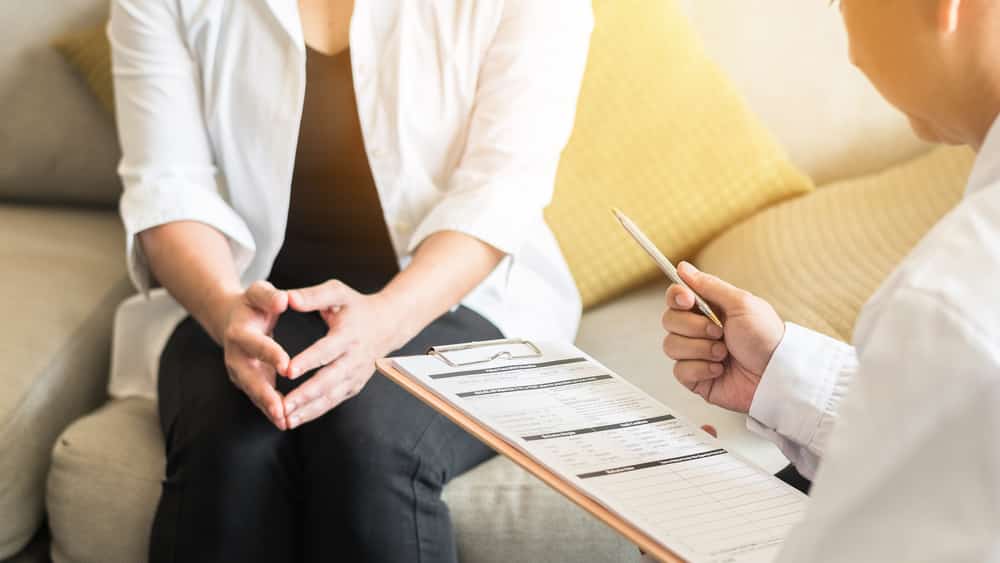
Researchers aren’t exactly sure what causes fibroids, but they think that each tumor occurs as a result of abnormal muscle cells in the uterus. These cells tend to divide rapidly and develop into a tumor thanks to the female sex hormone estrogen, which tends to speed up the growth of many things in the body. As stated above, not all women experience symptoms due to these tumors. Some are painful or cause menstrual problems while others have no signs at all. Because it’s not always apparent if you have uterine fibroids, it’s a good idea to make sure you have regular check-ups. Other symptoms include:
● Heavy or seemingly long menstrual periods that can lead to anemia
● Abnormal vaginal bleeding that occurs between periods
● Pain in the pelvic area that is caused by the tumor pressing on nearby organs
● Lower back pain
● The need to urinate frequently (again, due to the tumor pressing on the nearby organs)
● Pain during sex
● A firm mass that can be felt near the middle of the pelvis
Women approaching menopause are the most at risk for developing uterine fibroids, thanks to their longtime exposure to high levels of estrogen. Hormone changes are also associated with the tumors, which means that you can get fibroids anytime during puberty and childbearing years. Research shows that African American women and obese women are more likely to develop the condition. You’re also at an increased risk if you have a family history of them.
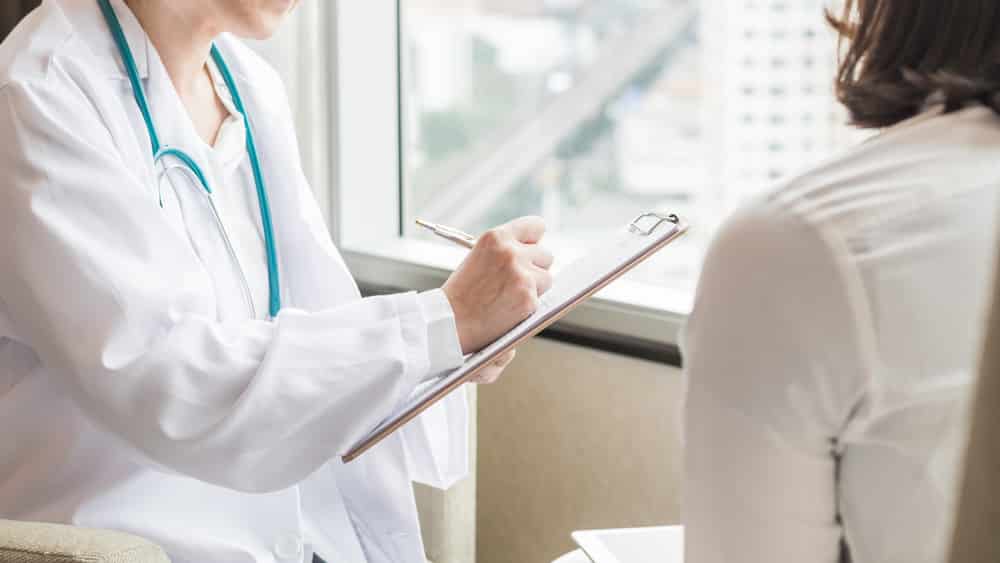
Surprisingly, some research shows that many factors can protect women from getting uterine fibroids. For example, women who have had two children have a 50 percent decreased risk of having uterine fibroids than women who have had no children at all. It’s unclear whether having children protected these women from developing the condition or the fibroids were to blame for the women being infertile.
Still, research shows that the best way to reduce your risk of getting uterine fibroids is to prevent them from occurring in the first place. One study found that treating high blood pressure in premenopausal women can help reduce the risk of getting uterine fibroids.
This can be done by making better dietary choices, such as eating higher quality meat and more detoxifying vegetables and cutting back on refined sugars and alcohol. Exercise is also an essential part of the treatment process. The idea behind most natural treatment methods is to balance your hormones naturally to prevent excessive tumor growths in the first place.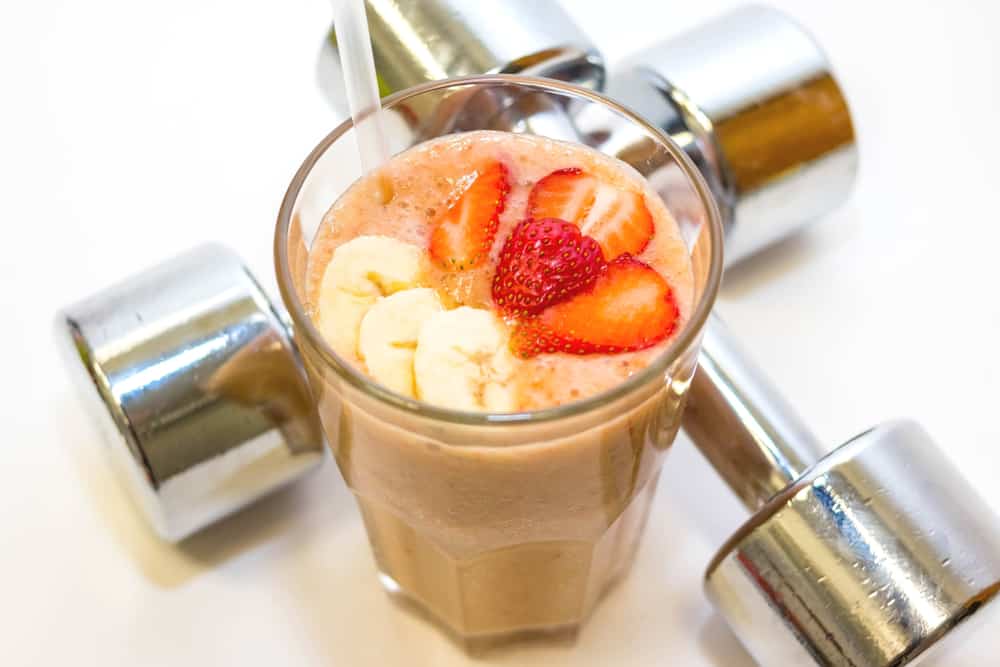
Uterine Fibroids Natural Treatments
If you were to go to the doctor to have your uterine fibroids treated, you might be met with some unpleasant options. Generally, treatment options for uterine fibroids include one of the following:
● Hysterectomy: the surgical removal of your entire uterus. This is the number one reason why women in the United States have hysterectomies. Once a woman has a hysterectomy, she cannot get pregnant.
● Anti-hormonal drugs: some drugs are available to counteract the effects of estrogen or progesterone in the body. Although they might be useful for treating fibroids, this type of therapy comes with some risks, such as hormonal imbalances.
● Conservative surgical therapy: this type of treatment involves a myomectomy, which removes the fibroids but leaves the uterus intact so that a woman can still get pregnant. But there are some risks involved such as damage to the pelvic tissue during the procedure, which might still impair a woman’s chance of having a baby.
● Gonadotropin-releasing hormone agonists (GnRH agonists): this approach triggers medical menopause by reducing your levels of estrogen in the body. The idea behind this approach is that it will help shrink the fibroids, but who wants to be put into medical menopause if you don’t have to be?
● Uterine artery embolization (UAE): a minimally invasive method that is used to block off the arteries that are supplying the fibroids with blood so that they can no longer survive.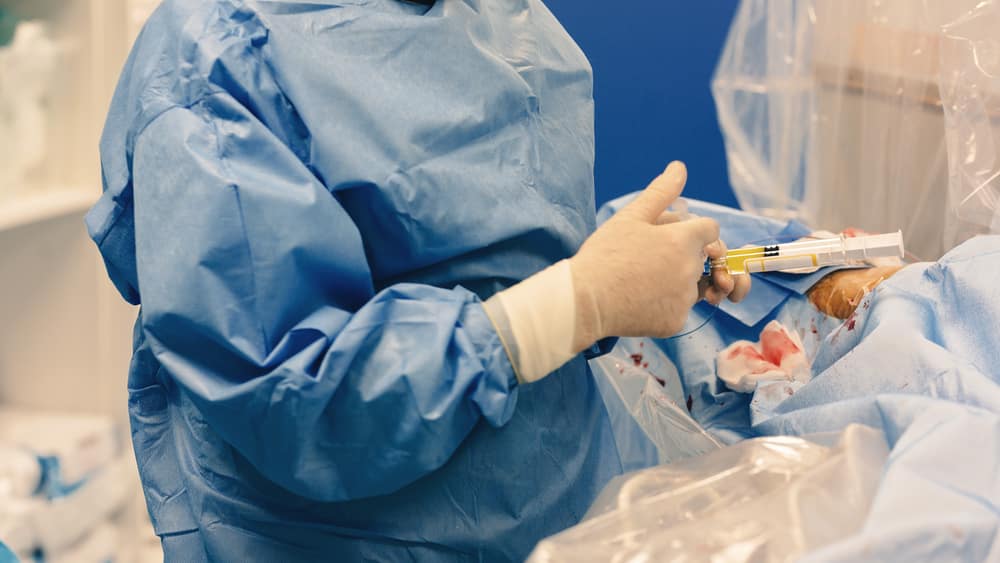 In other words, UAE cuts off the blood flow to the fibroids and shrinks them, but it’s never a good idea to block off arteries in the body.
In other words, UAE cuts off the blood flow to the fibroids and shrinks them, but it’s never a good idea to block off arteries in the body.
● Anti-inflammatory painkillers: the last treatment option that a doctor may prescribe are anti-inflammatory painkillers. These won’t cure or treat the fibroids, but they are designed to reduce the pain associated with them. The problem is that most pharmaceutical anti-inflammatory drugs come with some horrific side effects, and you can get the same amount of relief (or even better relief) from natural sources.
So there you have it. The medical approach to treating fibroids. Doesn’t surgery and painkillers sound fun? We didn’t think so either. Luckily, you can significantly reduce your risk of developing uterine fibroids using natural approaches that don’t involve going under the knife, cutting off the blood supply in your arteries, or going into medical menopause.
1. Avoid inflammatory foods
A bad diet can really be a problem for uterine fibroids. This is because tumors love to thrive off an acidic environment in the body, and eating a bunch of inflammatory foods is a good way to make that happen. On the other hand, tumors and diseases are less likely to thrive in an alkaline environment where the body has a healthy pH level and lower amounts of inflammation. To avoid developing uterine fibroids from forming in the first place, try avoiding the following inflammatory foods:
1. Processed meats: processed meats are some of the worst foods you can eat for tumor development.
 This includes deli meats, fast-food meats, and pre-made breakfast bacon and sausages. The reason why these foods are so bad is because they contain trans fats. Unlike healthy fats, such as monounsaturated and polyunsaturated fats, trans fats are man-made fats that are created when they undergo the hydrogenation process. Because they are heated to high temperatures to make them stable at room temperature, trans fats lack most of their nutrients. They’re also highly inflammatory. Additionally, most processed meats also contain added sugars, preservatives, and other fillers to help keep the product stable. Many preservatives and additives have been linked to tumor formations in the body, so you’re basically feeding your tumor directly when it eat processed meats.
This includes deli meats, fast-food meats, and pre-made breakfast bacon and sausages. The reason why these foods are so bad is because they contain trans fats. Unlike healthy fats, such as monounsaturated and polyunsaturated fats, trans fats are man-made fats that are created when they undergo the hydrogenation process. Because they are heated to high temperatures to make them stable at room temperature, trans fats lack most of their nutrients. They’re also highly inflammatory. Additionally, most processed meats also contain added sugars, preservatives, and other fillers to help keep the product stable. Many preservatives and additives have been linked to tumor formations in the body, so you’re basically feeding your tumor directly when it eat processed meats.
2. Refined sugar: refined sugars are the ultimate cause of chronic inflammation. You can find them in processed foods, such as sweets, cakes, pastries, baked goods, ice cream, and sweetened beverages. But they are also found in so-called healthy foods, such as crackers, granola bars, energy bars, and even dried fruit, so you always have to be on the lookout when it comes to what you’re eating.

Research shows that refined sugar causes inflammation that is directly linked to hormonal changes and obesity, which are two conditions that increase your risk of fibroids. One study found that eating high glycemic carbs was linked to a higher risk of fibroids in women. High glycemic foods include things like white bread, white rice, potatoes, as well as the sugary foods that we already mentioned.
3. Non-organic dairy: otherwise known as conventional dairy, non-organic dairy is full of added hormones, preservatives, chemicals, and hormones, which have been linked to tumor growth in numerous studies. Always make sure your milk, cheese, and yogurt come from pasture-raised, grass-fed, organic, antibiotic-free and hormone-free sources.
4. Refined carbohydrates: refined carbohydrates are similar to refined sugar because they are both highly inflammatory. In fact, refined carbohydrates break down into sugar in the body, which makes both food groups equally as bad for you. Make sure to avoid anything that contains white, bleached flour. This includes foods like white bread, cereals, and many store-bought brands of baked foods. Not only do refined carbohydrates spike your blood sugars and cause inflammation, but they also lack nutrition value as they have been heated to high temperatures and processed many times over.
5. Alcohol:
as tempting as it might sound to relax with an alcoholic drink at the end of the day, alcohol is converted into sugar in the body, which makes it highly inflammatory. Inflammation can lead to weight gain, diabetes, and hormonal imbalances. Not to mention most alcohol with the exception of maybe red wine doesn’t contain much nutritional value, so there is really no reason to drink it anyway. On the other hand, drinking lots of water in place of alcohol and other sweetened beverages can help detox the body to remove inflammation. Unsweetened tea is also good to drink, but watch out for higher levels of caffeine as this can throw your hormones out of whack, too.
2. Eat more anti-inflammatory foods
It’s not enough to simply reduce your intake of inflammatory foods. You also have to replace those foods with anti-inflammatory ones. Here is a list of the best foods to include in your diet:
Organic foods:
when you eat organic foods, you eliminate your exposure to pesticides and harmful additives that could be contributing to the growth of fibroids. This is because pesticides that are used in commercial agriculture have been shown to impact estrogen levels as well as other hormones, which provokes tumor growth.
 Additionally, pesticides and other chemicals have been linked to neurological problems as well as cancer, so it’s a good idea to buy organic whenever possible anyway. Organic fruits and vegetables also have more nutrients than non-organic, so you’ll be equipped with more antioxidants, vitamins, and minerals to fight inflammation.
Additionally, pesticides and other chemicals have been linked to neurological problems as well as cancer, so it’s a good idea to buy organic whenever possible anyway. Organic fruits and vegetables also have more nutrients than non-organic, so you’ll be equipped with more antioxidants, vitamins, and minerals to fight inflammation.
Green vegetables:
you really can’t go wrong when you eat more vegetables. Green vegetables, such as lettuce, kale, and spinach have anti-inflammatory properties that can help prevent fibroids from growing. Green vegetables are also high in vitamin K, which can help control menstrual bleeding and prevent blood clotting. The fiber in green vegetables can further help reduce inflammation and promote an alkaline environment that makes it hard for tumors to grow in.
Cruciferous vegetables:
cruciferous vegetables such as cabbage, broccoli, and cauliflower are well known for their ability to shrink or prevent tumors. One study found that eating a vegetarian diet high in cruciferous vegetables had a protective effect on women against uterine fibroids due to their high antioxidant and fiber content. The study also found that eating more plant-based foods such as cruciferous vegetables reduce the risk of uterine fibroids.
Flaxseeds:
flaxseeds have been shown to help balance estrogen levels in women, which can help shrink fibroids without the use of estrogen-blocking medications. They are also high in omega 3 fatty acids and fiber to reduce inflammation and shrink those pesky tumors, or at least prevent them from growing bigger. 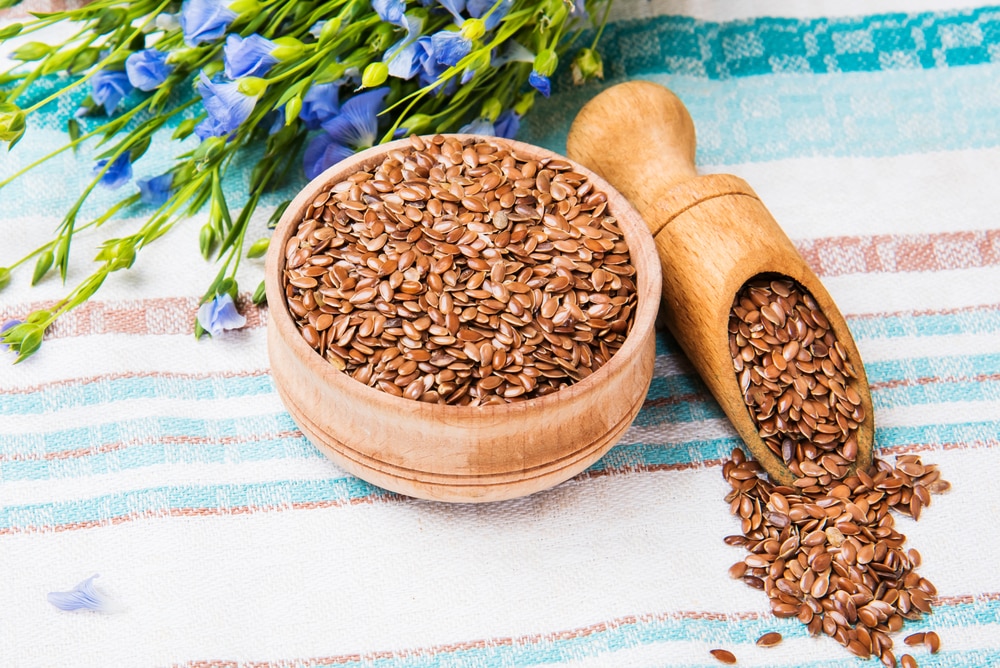 Try adding flaxseed to your oatmeal with a handful of blueberries first thing in the morning to get your day started right.
Try adding flaxseed to your oatmeal with a handful of blueberries first thing in the morning to get your day started right.
Foods that are high in beta-carotene:
these include foods such as kale, sweet potatoes, cantaloupe, and carrots. Beta-carotene is a plant pigment with antioxidant effects on the body. It’s converted into vitamin A once you eat it and helps repair damaged tissues, such as those that are present in the case of uterine fibroids. Other antioxidants to focus on include vitamin C (found in oranges), resveratrol (found in red grapes), quercetin (found in red onions), rutin (found in apples), and anthocyanins (found in berries).
Whole grains:
whole grains contain lots of fiber, B vitamins and minerals to help nourish the body and reduce inflammation. They are much better choices than eating processed, refined grains. Opt for sprouted whole grain bread in place of white bread and sprouted brown rice instead of white rice. Sprouted grains are easier to digest and also tend to be higher in nutrients. Beans and legumes such as chickpeas and lentils are also good options as they are full of protein and high in fiber to repair damaged tissues.
Foods that are high in iron:
uterine fibroids can sometimes make women have heavier and more painful menstrual periods than normal, which means that they are at an increased risk of developing iron-deficiency anemia.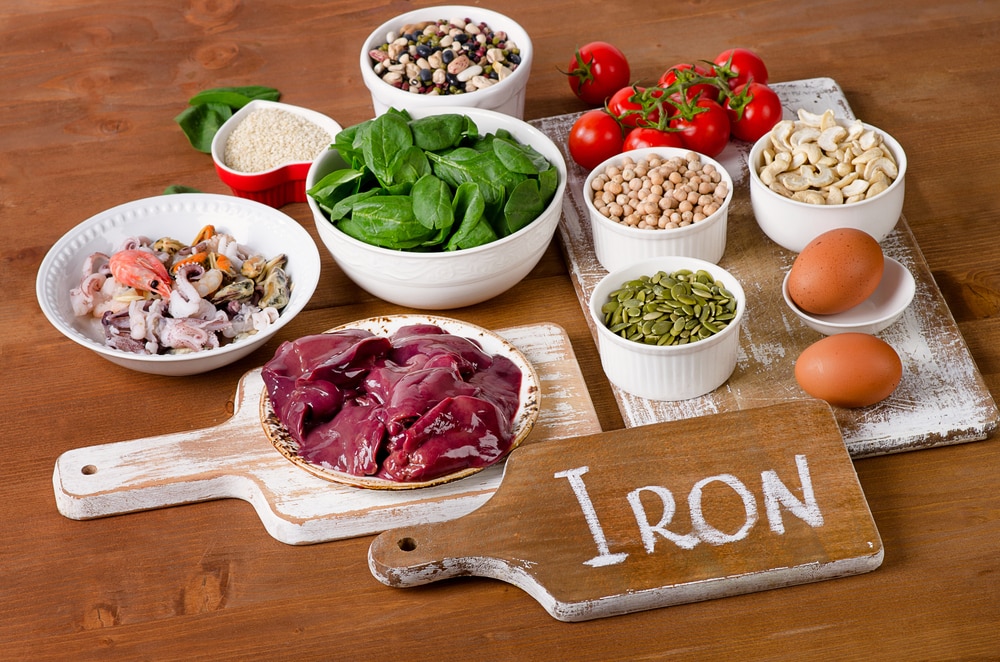 The best way to combat this is to eat lots of foods that are high in iron, such as grass-fed beef and legumes.
The best way to combat this is to eat lots of foods that are high in iron, such as grass-fed beef and legumes.
3. Try supplementing
Supplementing is a great way to cover all your bases and get in the nutrients that you need to avoid deficiencies. Almost everyone should be taking a whole-food multivitamin anyway because of all the possible exposures to toxins in today’s modern life. But you can also take hormones that are known for better hormone balance to help prevent or reduce fibroids from developing.
Fish oil (or flaxseed oil):
omega fatty acids are great for reducing inflammation and restoring proper hormone balance within the body. Consider taking 1,000 mg of fish oil daily, preferably from a clean source such as wild salmon or krill. You want to make sure your fish oil supplement doesn’t contain any potentially harmful pesticides or fillers. You can also take a tablespoon of flaxseed oil daily to get in your omega needs.
Vitex:
vitex is otherwise known as chaste berry, which helps balance estrogen levels by promoting progesterone. Estrogen and progesterone fight for dominance in the body, so when you have high levels of estrogen, you might not have enough progesterone and vice versa.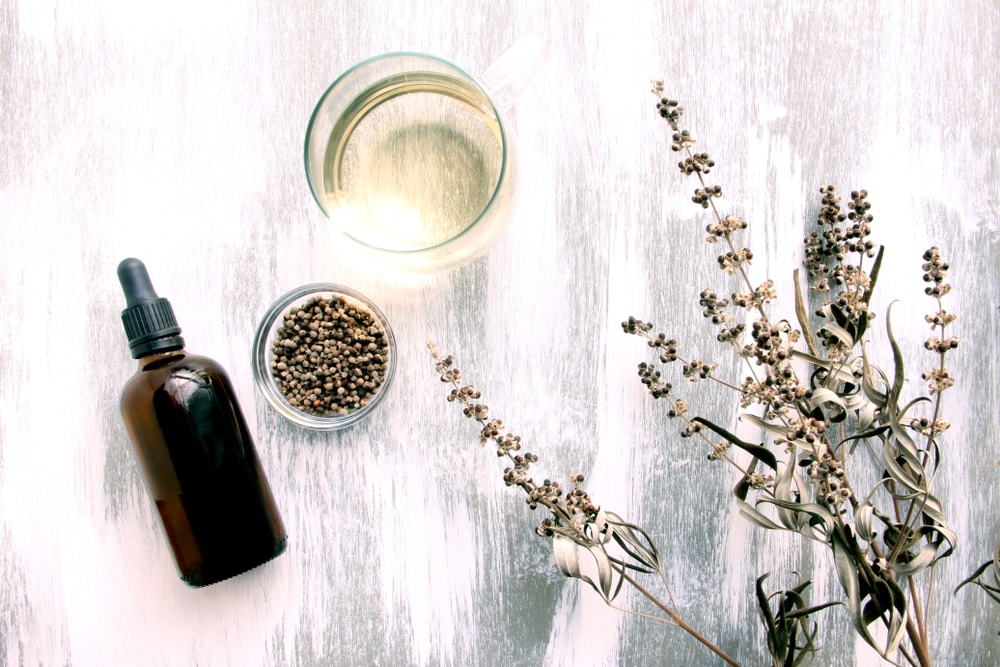 Vitex helps balance your estrogen so that fibroids don’t grow excessively or even at all. The best part is that vitex is much safer than most pharmaceutical drugs. Aim for up to 1,200 mg per day.
Vitex helps balance your estrogen so that fibroids don’t grow excessively or even at all. The best part is that vitex is much safer than most pharmaceutical drugs. Aim for up to 1,200 mg per day.
B-complex blend:
a B-complex blend is a good way to make sure your cells have the energy they need to fight off pathogens and inflammation. B-vitamins are especially important if you don’t get enough from your diet. Keep in mind that a basic multivitamin should cover your needs, but if you’re not taking one then you could definitely benefit from a B-vitamin supplement in the form of 50 mg daily.
Progesterone cream:
another good way to stabilize hormone imbalances and reduce estrogen dominance in the body is to use progesterone cream topically. You’ll probably have to get a prescription from your doctor for progesterone, so be sure to ask him or her if this is a good option for you based on your history. Most women rub the cream right into their legs or stomach, and it absorbs directly into the skin.
Milk thistle:
milk thistle is an herb that helps with liver detoxification to balance hormones and reduce inflammation. Aim for up to 300 mg per day in capsule form.
4. Try essential oils
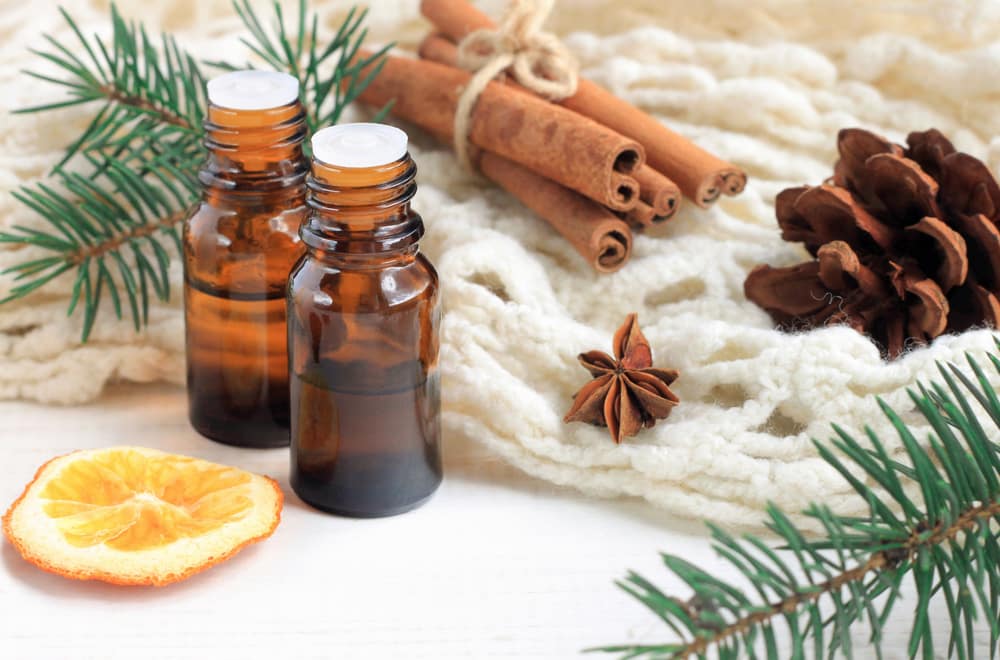
Essential oils are a great way to introduce pharmaceutical grade oils into your life without the use of harmful drugs. Most of them have numerous benefits, such as reducing inflammation and balancing hormones naturally. They are also safer than most drugs and can be used just about on any part of the body. Plus, research shows that essential oils are great for relieving depression and balancing your mood, which could be problematic if you’ve suffered from imbalanced hormones. Try using frankincense, clary sage or thyme to reduce your risk of uterine fibroids. One study found that clary sage was able to balance a woman’s hormones by lowering her levels of cortisol. It also was found to have antidepressant effects.
To use essential oils, try rubbing about two drops of each on your lower abdominal area a few times a day. You can also use a carrier oil with it if you have sensitive skin. Coconut oil works really well. Some people put two drops of the oil under their tongue once a day as well. You can also use essential oil in a hot bath. Fill the tub with water and use a half cup of Epsom salt and about 20 drops of your favorite essential oil. This will help you relax while also detoxing harmful toxins from the body. Just be sure to sip water throughout the bath as the Epsom salt may leave you dehydrated.
5. Use castor oil
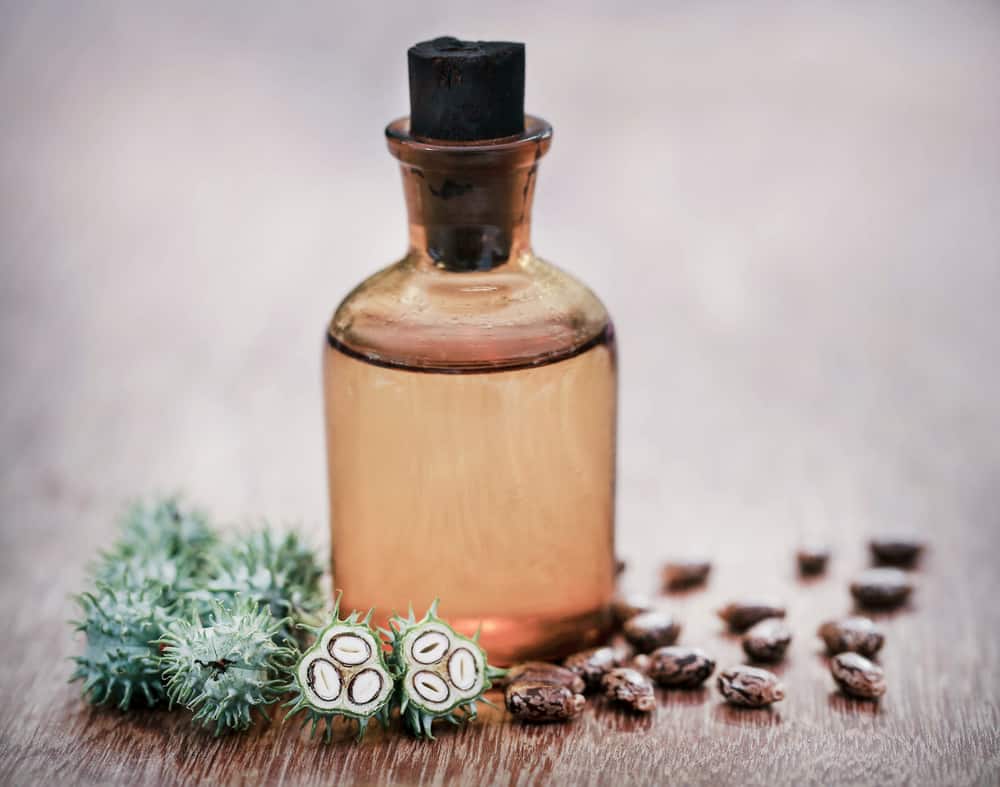
Castor oil contains an anti-inflammatory ingredient known as ricinoleic acid that has been shown to decrease certain symptoms of inflammation, such as constipation. It can also help improve your body’s natural detoxification process to boost alkalinity in the body and prevent the growth of tumors. You can use a castor oil pack by placing in on your abdominal area. This will help increase blood flow to the area as well as white blood cells that get rid of toxins known as lymphocytes. If you don’t have a castor oil pack, you can rub castor oil on your abdominal area for the same benefits.
6. Sip on herbal tea
Herbal teas are a great way to balance your hormones naturally. They also decrease inflammation and help you relax, which can help fight off tumors. Look for herbal teas such as dandelion root, nettle, red raspberry, milk thistle and chaste berry, which have been shown to have systematic benefits on the reproductive system and uterus. Avoid the temptation to add sugar as this will counteract the anti-inflammatory effects. Raw honey is a good way to sweetened tea, but make sure it’s unprocessed and unfiltered so that it contains all its original nutrients and antibacterial properties.
7. Exercise
Exercising regularly is one of the best ways to prevent uterine fibroids. One study found that the more a woman exercises, the more she reduces her risk of getting them. This is because exercise has anti-inflammatory effects on the body. It has been shown to control blood pressure, insulin sensitivity, weight management, and even hormone balance.
Plus, exercise is great for relieving stress and putting you in a better mood! Some women find that they are more likely to eat better when they are also exercising. Finally, exercise is a good way to control the pain associated with any existing fibroids that you may already have.
Exercise doesn’t have to be strenuous to be helpful. Some research shows that you can even break your exercise sessions up into two or three times a day. For example, hit the stairs for ten minutes before work. Do another ten minutes at lunch and again before you leave work for the day. You can also recruit your family into your exercise sessions. Tell them that dinner won’t be served until everyone goes for a 30-minute walk or plays in the yard for a certain amount of time. Don’t forget that gardening work counts, too. You can kill two birds with one stone by getting out the rake and cleaning up your yard while getting your heart pumping.
8. Clean up your home
Reducing your exposure to environmental toxins is a good way to restore hormone balance. Common offenders that you want to watch out for include synthetic fertilizers, bleach, food preservatives, herbicides, pesticides, food dyes, and harmful cleans. In addition to eating clean, you’ll also need to use “clean” products that use only natural ingredients around your home. Look for eco-friendly dish soap, household cleaners, and laundry detergent. Also, keep in mind that you’ll need to invest in unbleached and natural sources of feminine care in addition to natural makeup and body care products.
9. Reduce your stress levels

Stress does terrible things to your body. It increases your inflammatory levels and makes it hard for your body to take care of itself. Not to mention, stress can affect your hormone levels and blood pressure, which are two conditions that are directly linked to uterine fibroids. Some research shows that uterine fibroids grow during stressful times. Because of this, it’s important that you find a good, healthy outlet for your stress.
Exercise is great for reducing stress levels, but it can be hard to find time to fit it in. So you’ll need to make time! Try setting your alarm for 30 minutes earlier each day and go for a walk before starting your morning. You can also try a yoga class for relaxation or grab a friend and join a gym. In addition to exercising, find ways to cope when stress as soon as it happens. If stress hits at work, take a few deep breaths and relax before trying to tackle the situation when you’re upset. Get outside for some fresh air if you can. Some people find that meditation is a great way to channel their thoughts elsewhere and control their stress levels.
The worst thing you can do is turn to food when you’re stressed. Research shows that most people tend to eat more carbohydrates when they are stress, and they aren’t the good kind either. Do you know anyone who hits the salad bar when they are stress? Neither do we. Stay away from the sweets, chocolate, and other comfort foods that might make you feel better now but will ultimately do more damage to your body later.
10. Eat dairy (within reason)
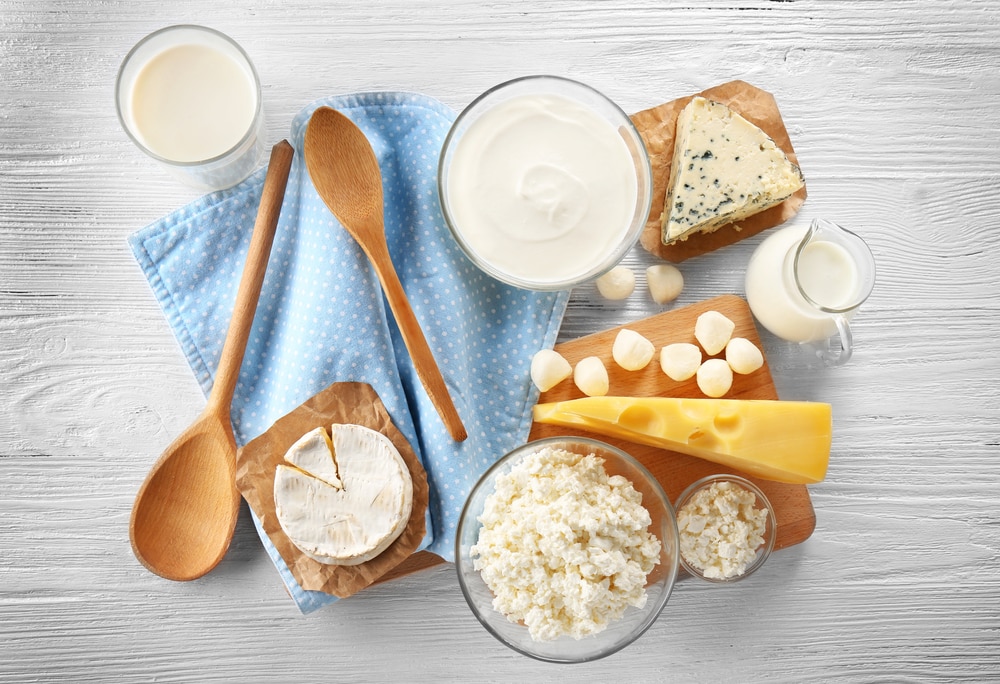
This last tip is a tricky one as dairy is traditionally known as an inflammatory food that should be avoided. But according to one study, dairy can help you reduce your risk of uterine fibroids. In fact, the study found that African American women who consumed at least four servings of dairy a day had a 30 percent reduced risk of developing fibroids than women who did not consume that much. The study took 22,120 premenopausal women who had 5,871 incidences of fibroids and found that both full fat and nonfat dairy produces helped protect the women against fibroids.
Specifically, the researchers found that there are two components of dairy that helped protect the women. The first was butyric acid, which is a fatty acid that is commonly found in high-fat dairy products. The second was the calcium to phosphate ratio, which was associated with a lower risk of fibroids.
The trick with dairy is to be picky about your sources. Again, remember that organic is best but not all organic milk is grass-fed or free from antibiotics or hormones. Make sure you choose a milk or cheese product that comes from cows that are grass-fed or pasture-raised as this means that they have spent most of their lives in a field with access to grass and not in a barn where they are pumped full of chemicals and never see daylight. You might want to limit your intake of milk and go for no-sugar-added yogurt instead to keep your sugar levels down. Kefir is a great source of dairy. Plus, you get the added benefits of probiotics to keep your digestive system happy.


